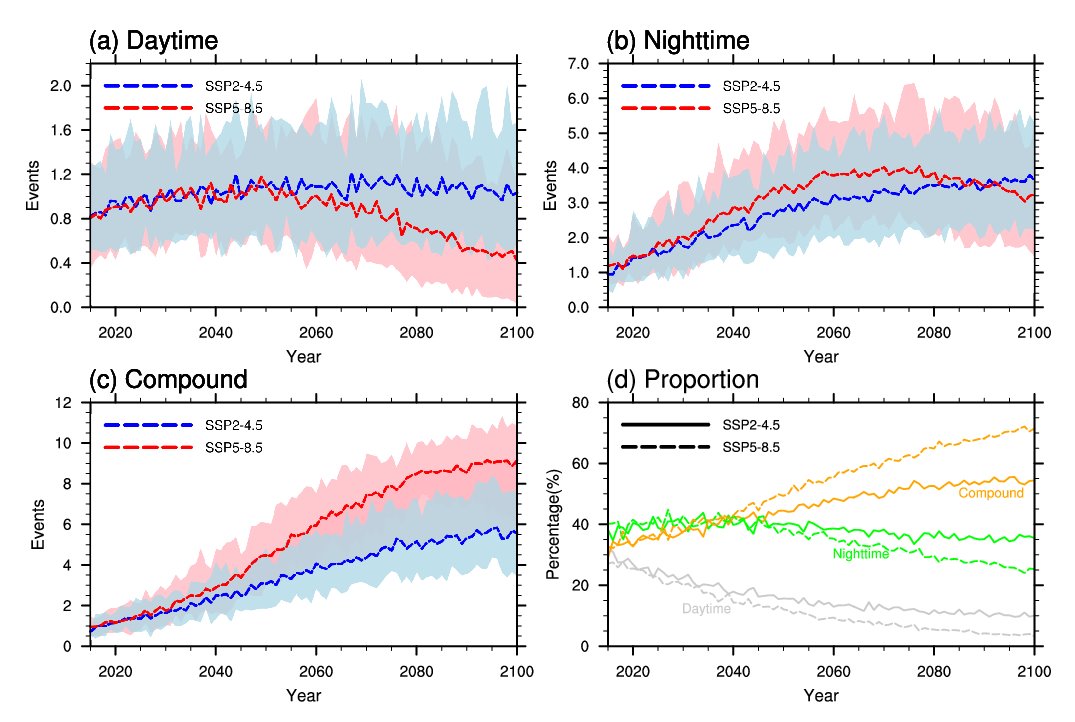在全球变暖的大背景下,高温热浪事件频发,对经济社会和人口(发病率和死亡率)造成严重威胁。除传统意义上基于日最高气温定义的热浪事件外,夜间异常高温被指出对人体健康的影响更大,而日夜连续的高温过程会进一步放大这种危害。周波涛教授团队基于国际耦合模式比较计划第六阶段(CMIP6)模式模拟结果及人口数据,对21世纪中国区域复合型高温热浪及其人口暴露度变化进行预估,并与单独发生在日间和夜间的单一热浪事件进行比较。
结果表明,未来复合型高温热浪的发生风险会持续加剧。在SSP5-8.5情景下,复合型高温热浪的发生频次预计将持续增加至21世纪末期,而日间(夜间)高温热浪预计先增多然后在2050(2070)年左右开始逐步减少。相应地,未来高温热浪事件中复合型事件的比例将会持续增加。复合型高温热浪的显著增加也会进一步导致中国区域人口暴露度的增加:在SSP5-8.5情景下,全国平均暴露度预计将在21世纪中期(2046–2065)增加12.2倍,并在21世纪末期(2081–2100)进一步增长到16.3倍;其中增幅最大的区域分布在中国西部和华南地区。

Figure 1. Temporal changes in frequencies of (a) daytime HWs, (b) nighttime HWs, and (c) daytime-nighttime compound HWs that are averaged over China. (d) Proportions of daytime HWs (grey line), nighttime HWs (green line), and compound HWs (orange line) to the total HW events. Light blue and pink shadings indicate the 5%–95% range of models under SSP2-4.5 and SSP5-8.5, respectively.
相关论文信息:
Xie Wenxin, Zhou Botao, Han Zhenyu, Xu Ying. Substantial increase in daytime-nighttime compound heat waves and associated population exposure in China projected by the CMIP6 multimodel ensemble. Environmental Research Letters, 2022, 17, 045007. doi: 10.1088/1748-9326/ac592d